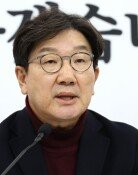Alleys with flourishing culture in the urban area
Alleys with flourishing culture in the urban area
Posted July. 24, 2019 07:52,
Updated July. 24, 2019 07:52

Hot places in Seoul, including Seongsu-dong, Ikseon-dong, Yeonnam-dong, Garosu-gil, and Hongdae, are the alleys garnering great attention in the urban area. However, large-scale apartment complexes in newly developed cities with broad streets fail to offer such charms of alleys. “Old alleys and streets infused with people’s everyday lives can provide a ground for culture. Meanwhile, new cities with broad streets lack connectivity rarely become tourist attractions as shopping mall run by large corporations cannot create culture,” said Professor Mo Jong-ryn of Yonsei University, who wrote a book titled “Capital Theory of Alleys.”
The “Alleyway Gwanggyo” in Gwanggyo, a planned city near Suwon, was created in May. The 400-meter alleyway next to the central park overlooking the Gwanggyo Lake Park is a cultural space that presents “cultural alleys in the neighborhood.” It has become a hot place with over 10,000 visitors per day.
It is quite a different scene that most apartment complexes near a river or lake in South Korea, in which apartment buildings are built right next to each other to offer a view to all units and all-in-one shopping centers are set up to monopolize a water view. The Alleyway Gwanggyo pushed apartment complexes to the backside of the lake and created an open space close to the lake with plazas and alleys. As local residents pass this space as short cuts to schools and so on, it naturally draws a lot of people.
A mega-scale art piece named “Clean Slate” by New York-based artist KAWS, as well as graffiti works, are available in the central plaza for passerby’s enjoyment. Slowly walking along the alleys, visitors will encounter “Doosoo-gohbang,” a cooking studio run by Buddhist monk Jeong Kwan who specializes in temple food and offers cooking classes in the studio, as well as vegetable gardens and “jangdokdae’s” where Korean traditional crocks are placed. Some of the highlights among over 100 unique stores located in the Alleyway are: “Mildo,” a famous bakery whose main shop is located in Seongsu-dong, Seoul; “Dagot,” a vegetable store that directly gets their supplies from the national association of young farmers; “Chaek Baljeonso,” a local book store run by former announcer Kim So-yeong; botanical gardens; galleries; and pop stores.
Indoor shopping malls have been the mainstream in South Korea’s urban cities as they provide a space protected from fine dust, rain, the heat, and the cold in the country with distinctive seasons. Unlike the closed space of a large shopping mall that one may only approach in a car, the open space of alleyways offers different charms for walkers.
Seung-Hoon Cheon raphy@donga.com
Headline News
- Joint investigation headquarters asks Yoon to appear at the investigation office
- KDIC colonel: Cable ties and hoods to control NEC staff were prepared
- Results of real estate development diverged by accessibility to Gangnam
- New budget proposal reflecting Trump’s demand rejected
- Son Heung-min scores winning corner kick







